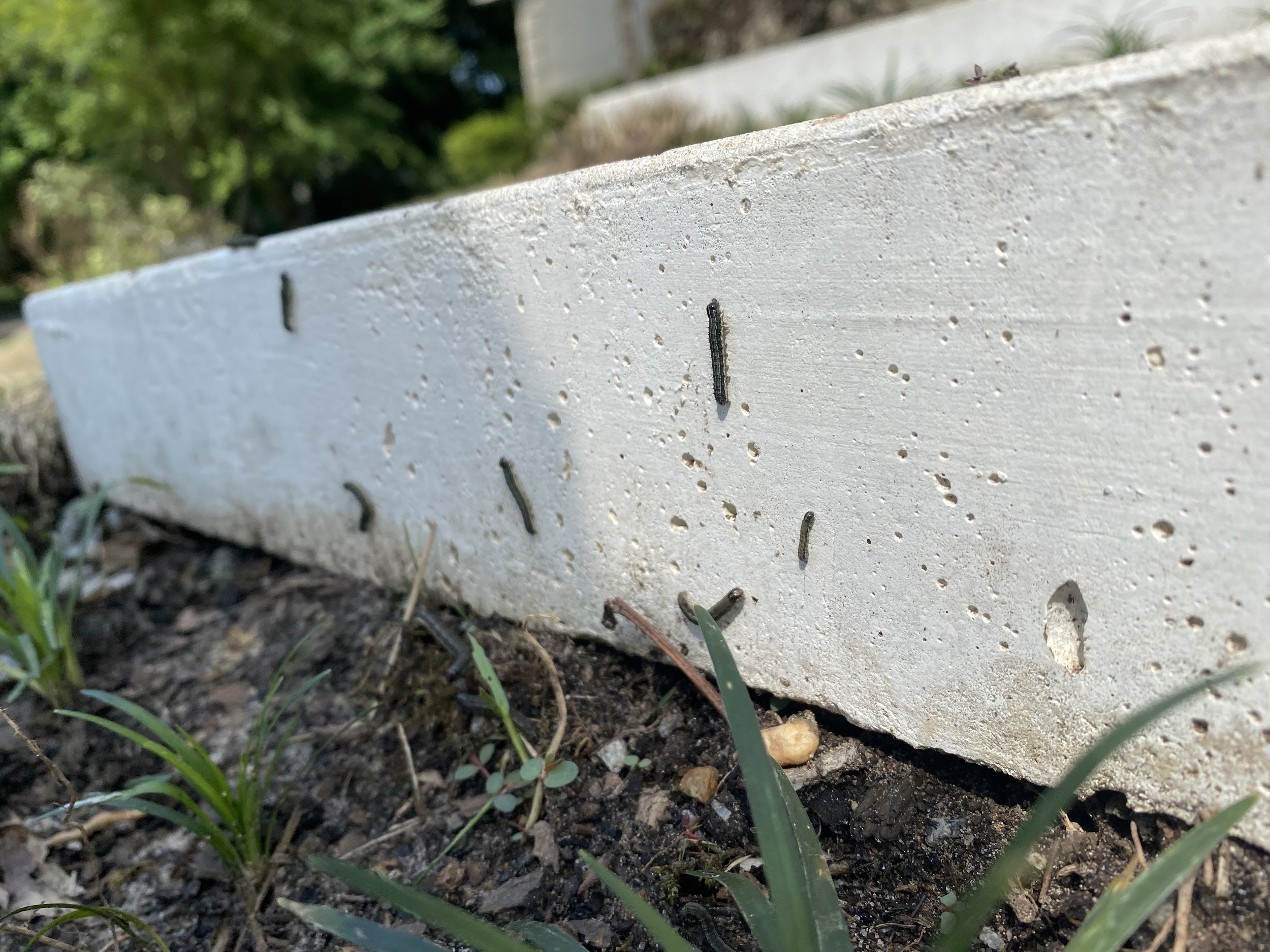Armyworms



What Are Armyworms?
Armyworms are caterpillars known for their rapid movement in large groups, feeding aggressively on turfgrass and other plants. They are typically striped caterpillars with a net-like pattern on their heads. The fall armyworm(Spodoptera frugiperda), a persistent pest for over a century, prefers well-fertilized bermudagrass but can also infest freshly sodded zoysia grass.
When and What to Look For
🔍 Signs of Armyworm Activity:
Chewed grass blades and plant tissue
Visible caterpillars in the early morning or late afternoon/evening
Late summer to early fall (July–August) outbreaks
Armyworm Biology & Life Cycle
🐛 Feeding Behavior:
Armyworms chew on grass and are most active early in the morning or late afternoon/evening, though they can feed at any time.
On tall, unmowed turf, they may be easily visible during the day. In regularly mowed lawns, they hide deeper in the turf during hot hours.
🦋 Adult Moth Identification:
The adult fall armyworm is a mottled gray and brown moth with a wingspan of about 1½ inches.
Outbreaks typically occur in late summer or early fall (July–August), but severe infestations have been reported as early as mid-April.
Damage to Lawns
⚠️ What Armyworm Damage Looks Like:
Damage severity varies depending on grass type and maintenance practices.
They primarily target bermudagrass but can also affect cool and warm-season turfgrasses.
Heavily infested lawns may appear drought-stressed, with brown, thinning patches.
Cultural Management & Natural Predators
🐦 Nature’s Pest Control:
Birds and paper wasps actively hunt and feed on armyworms.
Increased bird activity (such as pecking at turf) may indicate an infestation.
Paper wasps capture larvae to feed their young.
🧪 Detecting Armyworms:
Soap Flush Test: Mix dish soap with water and pour it over a small patch of grass to force larvae to the surface.
Check for eggs on light-colored surfaces like fence posts, leaves, and gutters.
Treatment & Control Strategies
🛠 Before Applying Insecticides:
Mow the lawn to reduce grass height—this helps insecticides reach the larvae more effectively.
Apply insecticides early in the morning or late in the evening when armyworms are most active.
Follow label instructions for proper application and post-treatment irrigation procedures.
🌿 Integrated Management Approach:
Encourage natural predators like birds, fire ants, and wasps.
Regularly monitor turf health and bird activity as early warning signs.
📢 Stay vigilant during peak seasons to prevent armyworm infestations before they cause severe lawn damage!🐛✅
